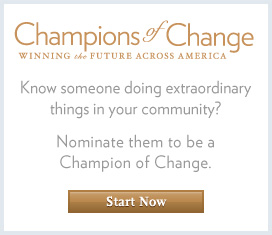Champions of Change Blog
Inspiring Future Conservation Leaders Through Outdoor Education
Posted by on March 24, 2014 at 12:59 PM EDT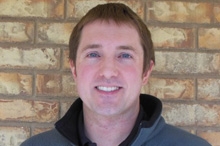
Andy Hart is being honored as a Next Generation of Conservation Leaders Champion of Change.
The idea of conservation as Federal management of land and water resources to ensure future sustainable use and boots on the ground service to public lands goes back many decades. While these are still important themes, we are just beginning to learn what conservation looks like for “Generation Like.” Children having authentic experiences in nature at a young age can no longer be taken for granted, yet is critical for developing conservation minded citizens. Competition for young people's attention from digital media and social networking is fierce. Tremendous amounts of information, true, false and otherwise is available at our fingertips 24/7. A responsible Federal budget may no longer be able to financially support all of the conservation needs of our country. Increasing population and modern lifestyles are demanding more and more of our natural resources and environmental issues are becoming more and more complex. Undoubtedly, it is a real challenge to address all of these concerns in the modern conservation landscape but from my perspective, outdoor and environmental education offers a significant tool to do so and it is incredibly rewarding to try. At Nevada Outdoor School, we are continually musing on these issues and trying to bring innovative solutions to life.
When engaging young Americans in conservation, it is important to be mindful of their reduced attention span and need for more timely gratification. Youth conservation service projects can be designed to do this, ensuring they can see the results of their efforts and still provide tangible physical benefit to the land. Of course, with youth, the physical outcomes of a project should be far secondary to the experience. Some of the greatest conservation minds our country has ever known did very little at a young age for our natural resources. Folks like John Muir and Aldo Leopold were documented to have been a bit rough with nature in their formative years, but the depth of connection and passion those experiences created propelled these leaders to ultimately benefit public lands in profound ways so that future generations could enjoy similar experiences. Even as part of formal outdoor and environmental education programs, youth need time for unstructured exploration.
Likewise, youth propensity for technology shouldn’t be feared by those of us working hard to get them away from the computer screen and into nature. Certainly, we should instill in our children the value of putting technology away for a while and enjoying the natural sights and sounds around us. However, there are a variety of ways modern electronics can assist in authentic experiences in the outdoors. Some examples might be a camera with GPS location tagging, a digital water quality tool used for a citizen springs assessment or a hand held GPS used for a family EarthCaching adventure. Additionally, reflection remains an important aspect of any learning experience. We need to embrace the fact that reflection today may be quite appropriate in the form of blogging, tweeting or posting about that experience.
While these are just two of the hurdles to overcome when engaging youth in the outdoors and conservation, we try not to be overwhelmed. Never forget that taking kids outside is supposed to be fun. The more fun it is, the more likely we are to see the next generation develop into conservation-minded adults, with the science background to think critically and make thoughtful decisions on conservation and land-use issues. This idea drives Nevada Outdoor School in our work, providing opportunities for youth and families to learn and grow outdoors and engaging as many as 1,000 students each month with inquiry-based, outdoor and environmental education initiatives.
Andy Hart is Executive Director at Nevada Outdoor School, a 501(c)(3) organization inspiring exploration of the natural world, responsible stewardship of our habitat and dedication to community. Andy believes that America’s public lands are at the top of the list of things that make our country great.
Learn more aboutHawaii Youth Catching the Waves of Change
Posted by on March 24, 2014 at 12:57 PM EDT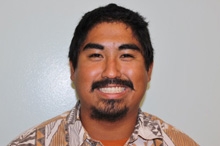
Jon Brito is being honored as a Next Generation of Conservation Leaders Champion of Change.
I am honored and truly grateful to be recognized as a White House Champion of Change. To be honest it came as a surprise to me because all that I have done is followed my passion of giving back to a community that has provided me with such rich experiences and support.
The summer after I finished high school, I signed up with the Hawaii Youth Conservation Corps (HYCC) as a team member, one of the many environmental opportunities offered by Kupu, an organization that was created to train the next generation of Hawaiian youth to serve as natural resource management, renewable energy, and conservation career professionals. I was inspired by the two team leaders for our Moloka’i crew, who really knew not only how to handle a bunch of high school aged kids, but also understood how to engage us and make something that seemed pretty boring (planting) into something meaningful (learning the Hawaiian names of the plants).
Drawing from my initial HYCC experience, after college I was inspired four years later to become a Team Leader for HYCC on Moloka’i. My team was just like me four years ago: they had an idea where they wanted to go, but were pretty lost and did not know how to find their way. This presented the chance to show them the wonders conservation yields, how fun it can be, and that it could lead to a wealth of job opportunities and a rewarding career. We did hikes in the rain forests of the Kamakou Preserve looking for the elusive and endangered Hawaiian tree snail. We planted kalo in lo’i that our ancestors used for centuries.
I ended an enriching summer and decided on doing an AmeriCorps term with the non-profit Ka Honua Momona. Our main project was to restore 500 year old Native Hawaiian fishponds while incorporating Molokai’s youth in that process. I worked directly with the young adults that came through. They all came from different backgrounds with many different reasons but were all equally enlightening and great people. Many had no idea about the environmental issues that were happening in their own backyards. I tried to show them the danger that places like our reefs and forests were in, and that saving them could be part of the legacy of our generation. It was really cool to see them come back on volunteer days when they didn’t have to be there to help out with restoring the fishponds.
I served another term as an HYCC team leader due to lack of candidates on the island. My second team worked just as hard as the first, and our work ethics were rewarded with a helicopter trip into the remote valley of Pelekunu to do invasive game and plant surveys for The Nature Conservancy.
I think it is important for our youth,especially on Moloka’i, to connect culturally to ‘aina because Hawaiian culture is all about making sure that the resources that are available to you will also be available for future generations. One of things that I have learned in the process is that the work I accomplished with the Hawaii Youth Conservation Corps is happening all across the nation. The Corps Movement and The Corps Network are growing stronger, while young people are serving their communities, the Earth, and improving their own lives. It is also empowering to see some of the members of my previous team not only active but employed with various conservation organizations. I wish nothing but the best for them and am grateful with our shared experiences. I hope to be able to continue empowering youth to accomplish their dreams and to remember the connection that they have with the land.
Ua mau ke ea o ka aina i ka pono
The life of the land is perpetuated in righteousness.
Jon Brito is an alumni of the Hawaii Youth Conservation Corps, a program under the non-profit Kupu dedicated to empowering youth to serve their communities through character building, service-learning, and environmental stewardship opportunities across all 8 Hawaiian islands.
Learn more aboutConnecting Children to Science and Place in the Sonoran Desert
Posted by on March 24, 2014 at 12:56 PM EDT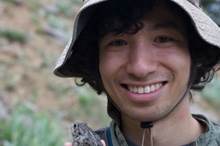
Benjamin Blonder is being honored as a Next Generation of Conservation Leaders Champion of Change.
My great-grandfather immigrated to the United States from China in 1915, at the age of 11. He soon became the owner of a corner grocery store in Tucson, Arizona, and stayed in the community for decades. Now, almost a century later, I find myself living in this same desert city, honored to share my experience bringing science education to communities in southern Arizona.
I came to the Sonoran Desert for a graduate program in ecology at the University of Arizona, and became captivated by the border region. Tucson itself brings together Native Americans, more recent immigrants, refugees, military families, students, retirees, and everyone else in between. We share an arid landscape situated between the Coronado National Forest, Saguaro National Park, and the Tohono O’Odham Nation. Living here, I saw that our natural areas are not equally accessed or appreciated, especially by the children who are our next generation of conservation leaders.
When I wasn’t studying ecology, I was teaching science at a middle school in the Tucson Unified School District and leading hiking trips for The Sierra Club Foundation’s Inner City Outings program. These experiences showed me many children who could benefit from a deeper sense of place and scientific focus on our environment. Science education can build broader minds, better jobs, and more thoughtful stewards of the land.
In late 2011 I proposed creating the Sky School — a science education program that would connect youth to our environment through inquiry-based outdoor science education. With support from the University of Arizona’s College of Science and the Forest Service, we have made that vision a reality. Our home is the summit of Mt. Lemmon, rising 6000’ above the Tucson basin. We’ve transformed a 25-acre observatory into a residential school, with hiking trails providing access to thousands of acres of public land.
We take school groups to our site for a week at a time, where students work in small groups to conduct original research with graduate students and other scientists. For many, a Sky School trip is their first experience outside their neighborhood, their first visit to public land, and their first contact with a real scientist. I know that these experiences can have a transformative effect on a life.
In our first two years we will have served more than six hundred students from seventeen primarily low-income schools. The community response has been overwhelmingly positive. Students have said, “I enjoyed what I was doing so much that I said I want to become a scientist”; “This has opened my eyes to all of the possibilities for myself in the scientific field”; “This is the best field trip I have ever been on.” Teachers agree, saying “To get them outside seeing what they’re studying is so important” and “this immersive, stimulating and engaging program will become a fixture in our school district’s science curriculum.” We are excited to keep growing and bring this experience to more schools in the Southwest.
My passion for science education was sparked by an AmeriCorps service year with the McCall Outdoor Science School. I lived in central Idaho, where I taught environmental science and saw firsthand the positive impact of environmental education. Much of what we are now doing at the Sky School is inspired by my time there. I hope that this chain of inspiration will continue, so that some of the Arizona youth we now serve will find ways to become the scientific and conservation leaders of tomorrow.
Dr. Benjamin Blonder is the co-founder of the University of Arizona Sky School. He is an ecologist studying how plants respond to climate change.
Learn more aboutEngaging the Public in Protecting Our Blue Planet
Posted by on March 24, 2014 at 12:53 PM EDT
William Spitzer is being honored as a Next Generation of Conservation Leaders Champion of Change.
Recently I watched a documentary on the Apollo 8 mission. The astronauts talked about how it felt to orbit the earth, and see the Earth for the first time as a blue planet — because that is what Earth is. I was very moved to hear these hardboiled pilots and engineers in tears talking about how beautiful the earth looked, and how they missed it when they headed off toward the moon. When you step back and look at the big picture, you realize that it’s the only Earth we’ve got and we need to take good care of it.
How do we help more people see the connections between themselves and the planet we need to protect? At the New England Aquarium we have been working on how to do this, using the power of aquariums, zoos, and nature centers across the country to inspire, educate, and engage the public. We need to use the emotional power of immersive experiences with nature. We need to translate science so that is not only understandable, but also meaningful and actionable. We need to build on what we know about how people communicate and behave, and on what they already know and value.
For example, we need to make effective use of metaphors to explain the science that links causes, impacts, and solutions. Scientists often talk about climate change in terms of the “greenhouse effect” — but most people don’t understand how greenhouses work. Instead, we talk about how burning fossil fuels releases carbon dioxide that forms a heat trapping blanket around the Earth. People intuitively understand that too much blanket makes things too hot. By changing our choice of words, we can help people see what is needed to solve the problem.
There used to be a focus on finding the little things we can do to make a difference. But given the scope of the problems we face, we need to do big things and make a big difference. It’s about acting as a community, realizing our potential as citizens not just consumers. For example, in Boston we have made great improvements in public transportation, a new greenway, bike sharing, bike lanes, ferries and water taxis, all of which help to create a greener and more livable city.
We need to shift the conversation from “doom and gloom” to “hope, innovation, and change.” Studies show that environmental issues can create stress, especially for environmentalists. We have been working to create tools and training to help environmental educators relieve this stress, develop a sense of self-efficacy, and radiate a newfound sense of hopefulness to those around them. It’s like learning to speak a new language, combining the cognitive learning with emotional and social support. When we learn a new language we not only need to learn the verbs and syntax but we need to practice it with and get encouragement from others.
We are working with adult and youth staff from aquariums, zoos, parks, and nature centers from around the country, along with climate scientists and cognitive/social science experts, to create collaborative learning groups that work together for about 100 hours over 6 months. We are building a national learning and support network that will help to transform the culture of communication at more than 150 informal science education centers over the next several years. We believe that we can train enough voices in proven communication techniques to change the national discourse around climate change to be productive, creative and solutions focused.
William Spitzer is Vice President for Programs, Exhibits, and Planning at the New England Aquarium in Boston, Massachusetts. He is Principal Investigator of the NSF-funded National Network for Ocean and Climate Change Interpretation, and the NOAA-funded Visualizing Change projects.p.
Learn more aboutLife Happens Outside!
Posted by on March 24, 2014 at 12:50 PM EDT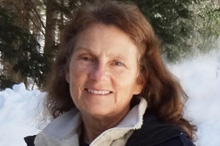
Carol Leone is being honored as a Next Generation of Conservation Leaders Champion of Change.
Many of us grew up in a time when, as kids, every minute we were not sitting in school was spent playing outside. Summers in particular meant endless hours of outdoor adventures — exploring the woods, building tree forts, turning rocks over in the creek, running through lawn sprinklers, biking the neighborhood, and generally getting dirty from head to toe! We did not pursue these outdoor activities because they were healthy for us. We were kids, after all, and spending time outside was just plain fun!
Today, a child’s life is spent mostly indoors. And a growing body of research directly links the absence of nature in the lives of today's youth to some of the most disturbing trends in childhood obesity, attention disorders, and depression. This growing disconnect is putting the mental and physical health of our youth at risk. But, what can we do?
Seven years ago, Teens To Trails was founded to help reverse this trend because we believe that LIFE HAPPENS OUTSIDE! We targeted teens as no other age group shows the signs of nature-deficit disorder more acutely. Our mission was based on a simple, replicable concept: If every high school in Maine offered an Outing Club program, every student would have access to safe, healthy and fun outdoor experiences just at the time in their life when they need positive choices the most. Since that time, the Teens To Trails movement has been fully dedicated to increasing the opportunities for teens to experience the out-of-doors through a variety of programs that promote and support high school Outing Clubs. Teens To Trails has been spreading the word that outdoor experiences are critical to the health and wellbeing of our youth, providing roots upon which to build their lives.
We need to acknowledge the importance of nature in our lives and recognize that unstructured time spent outside is not just leisure time — it’s an essential investment in our children’s health. We need to do all we can to increase the opportunities for all young people to experience the out-of-doors — to learn about themselves as they learn about the natural world that surrounds them. I have no doubt that, given the chance, teenagers will once again discover the joy and wonder of nature and their lives will be enriched in body and spirit.
Carol Leone is the Founder of Teens To Trails, a charitable nonprofit helping teens get active outdoors by promoting and supporting high school Outing Clubs. Their goal is to spread Outing Clubs across Maine and beyond so that every teenager has access to safe, fun outdoor activities regardless of prior experience or family income.
Learn more aboutPrescribing the Outdoors One Family at a Time Through Outdoors Rx
Posted by on March 24, 2014 at 12:47 PM EDT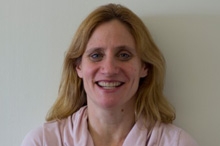
Pamela Hess is being honored as a Next Generation of Conservation Leaders Champion of Change.
I am so honored to receive the White House Champion of Change award. I have spent the last 20 years of my professional life helping kids and families discover the amazing benefits nature holds (physically and mentally). As a mom of two young girls, my quest to create the next generation of engaged outdoor enthusiasts has become even more personal. Finding the time to live a more active lifestyle throughout the year can be as challenging but it is so important for the mental and physical well-being of each and every family member it needs to be a priority.
Most of my fondest childhood memories involve “conquering the mighty woods” or sledding down the “big hill” with my family and neighborhood friends. Now when I take my family on outdoor adventures, I constantly hear things like “Wow, it’s great to see a family out here!”. Parents keep telling me they don’t have time or don’t know what to do outside or where to go.
I am in a unique place to help families change this. Through my work for the Appalachian Mountain Club (AMC), one of the oldest and best known outdoor recreation, education, and conservation organizations in the U.S., I had overseen many of our outdoor initiatives for families, schools, and at-risk urban youth. And then the opportunity to play a leadership role in developing an innovative new outdoor program came several years ago when AMC made the commitment to get 500,000 kids outdoors by the end of 2020 as part of its strategic goals.
AMC had researched outdoor exercise prescription programs elsewhere, and I knew that we could add a much greater level of on-the-ground support by offering free, easy, and fun local outdoor programs for families who got the prescriptions. One of the things that AMC does especially well is meeting people in their personal comfort zone with the outdoors, even if this means they have no idea how or where to get started and more concerns and skepticism than confidence.
Working with several doctors from MassGeneral Hospital for Children, we were able to combine our outdoor expertise with their medical expertise to create AMC’s Outdoors Rx program. The enthusiastic response we’ve received since launching the pilot program last year has been really exciting and gratifying. We’ve trained over 60 healthcare practitioners in Greater Boston communities, held hundreds of guided programs for over 1,200 kids and families, started training volunteer program leaders, and joined forces with partners ranging from housing authorities to other nonprofits to cast the widest net possible.
Doctors and medical professionals tell us they like having a practical and easy-to-implement option to offer their patients. Parents have been overjoyed at how welcome they’ve felt and how engaged their kids are during programs like our outdoor play parties, scavenger hunts, letter boxing, and nature walks. Of course the best part is the smiles and laughter from the kids.
AMC plans to expand the program in the near term through volunteer efforts, in addition to launching the program in other Boston-area communities later this year. Exploring the outdoors was such an important part of my childhood, and I look forward to seeing more kids and families out enjoying our local parks and recreational trails as Outdoors Rx grows.
Pam Hess is the Director of Youth Engagement and leads the Outdoors Rx Program at the Boston-based Appalachian Mountain Club (AMC), the nation’s oldest outdoor recreation and conservation organization. Ms. Hess has held a leadership role in youth outdoor education at AMC for the past 11 years. Prior to this she spent 10 years working on National Wildlife Refuges across the U.S.
Learn more about
- &lsaquo previous
- …
- 29
- 30
- 31
- 32
- 33
- 34
- 35
- 36
- 37
- …
- next &rsaquo

